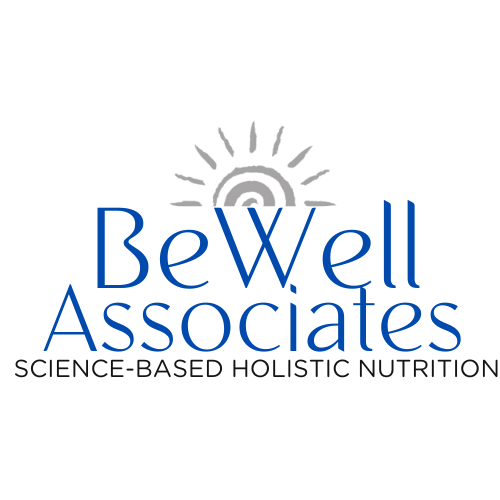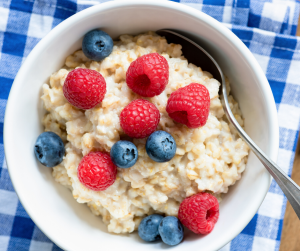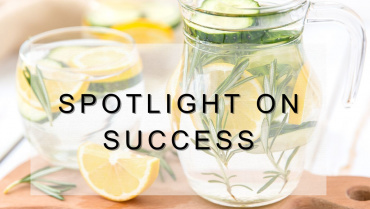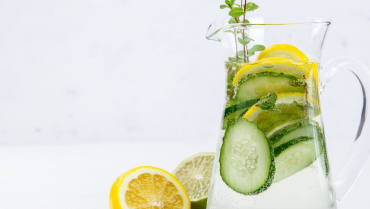Think having oatmeal, granola, or oat-based cereal for breakfast is healthy?
Think again.
Results of independent laboratory tests funded by the Environmental Working Group (EWG) found that most of the popular oat cereals are laced with significant amounts of the cancer-causing weed killer, Roundup. This includes Cheerios, oatmeal, and granola, plus snack bars and even Goldfish crackers.
Roundup, chemical name glyphosate, is an herbicide that has long been linked to cancer by the World Health Organization. Last year, in a $289 million settlement in California, a school groundskeeper claimed his cancer was caused by the chemicals he sprayed around the schoolyard. He won.
Monsanto Corporation, the maker of Roundup, has been in legal battles for many years over the toxicity of this product. The company is notorious for suppressing studies that bear out the toxic effects of this weed killer. Besides causing cancer, glyphosate harms the microbiome of animals and humans alike, killing beneficial bacteria and promoting pathogenic ones. Many of those filing lawsuits are battling severe illnesses and point to the growing body of evidence that a healthy microbiome is critical for all aspects of human health, from weight control to brain function.
How Glyphosate Harms Us
The main way glyphosate harms our bodies is that, because it is structurally related to glyphosate, it substitutes for glycine in our body’s proteins, collagens, and gelatin. This explains why glyphosate can cause so many serious health conditions, such as:
- diabetes
- obesity
- asthma
- chronic obstructive pulmonary disease (COPD)
- pulmonary edema
- adrenal insufficiency
- hypothyroidism
- Alzheimer’s disease
- amyotrophic lateral sclerosis (ALS)
- Parkinson’s disease
- prion diseases
- lupus
- mitochondrial disease
- non-Hodgkin’s lymphoma
- neural tube defects
- infertility
- hypertension
- glaucoma
- osteoporosis
- fatty liver disease
- kidney failure
Tragically, because glyphosate is a drying agent, U.S. farmers are now using it on wheat and other grains right in the fields, to make them easier to harvest. This causes two problems: it suppresses the beneficial bacteria in the plant, which help our digestion, and the carcinogenic glyphosate ends up in our food.
How Far Does The Problem Go?
The EWG-funded study evaluated the glyphosate content of several popular oat-based foods. There was glyphosate found in all but two of 45 samples of products made with conventionally-grown oats. Almost three-fourths of those samples had glyphosate levels higher than what EWG scientists consider acceptable for children to consume. (EWG’s child-protective health benchmark for daily exposure to glyphosate in food is 160 ppb.) About one-third of 16 samples made with organically grown oats also had glyphosate, but all at levels well below EWG’s health benchmark. To find out the glyphosate levels in major food brands, click HERE.
But Who Wants ANY of this Stuff in Their Food?!
Over the years I have had more and more clients tell me they can tolerate organic wheat or wheat while traveling abroad but not American-grown wheat. European countries banned glyphosate a very long time ago. Is it the glyphosate we’re reacting to? I don’t know.
What I DO know is there are ways to protect ourselves from the onslaught of glyphosate in our foods and homes.
Protecting Yourself From Cancer-Causing Glyphosate
- Build and maintain a healthy liver that can detoxify all toxic products. It’s a good first step to living in a toxic world. Consider a formal liver detox twice a year. Spring and fall are ideal times to do that.
- Buy organic whenever possible, especially oats and wheat. Learn how to get the most from your organic food dollars by checking the EWG’s “Dirty Twelve” and “Clean Fifteen” lists.
- Use non-toxic DIY weed killers. The one I use that works well for me is:
– 1 gallon white vinegar
– 1/4 cup dish soap (I use Dawn)
– 2 cups Epsom salt or regular salt
– empty clean gallon container for mixing
– spray bottle or multipurpose
Combine and spray! - Protect and effectively remove glyphosate from your tissues through the use of glycine powder, an amino acid that can be taken as a supplement, used as a sweetener, and is found in collagen products.
The Good News about Glycine
You can detoxify your body from toxic glyphosate by increasing your dietary intake of glycine. Your body builds new peptides and proteins every day to replace aging ones. An easy way to ensure your body uses glycine and not glyphosate is by flooding it with glycine. When you do this, the aging peptides/proteins containing glyphosate are flushed from your body.
Taking glycine as a supplement is very effective.
Dr. Dietrich Klinghardt, an internationally known holistic physician, recommends taking 1 teaspoon (4 grams) of glycine powder twice a day for a few weeks and then lowering the dose to one-fourth teaspoon (1 gram) twice a day. He states this forces the glyphosate out of your system, allowing it to be eliminated through your urine.
Collagen powder would have a similar effect because it is an excellent source of glycine.
If you are curious about your glycine levels, we can test them by evaluating your amino acids using the TRIAD test. Contact us today.
BeWell!






Add Comment